Our Preserve is known as one of the best birding locations in the area
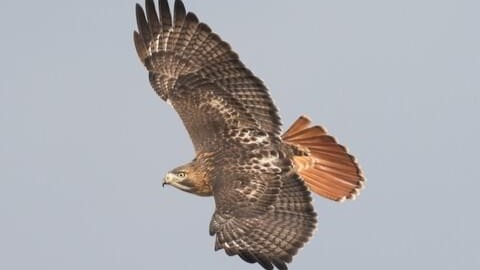
Photo – Red-tailed Hawk
During any season, brisk movements and flashes of color are seen throughout all parts of the Preserve and greenbelts that range from Shiloh Road in the west to Naaman Forest High School in the east. Nearly 200 species have been recorded since the first entry in 1997 on the Cornell University eBird population site.
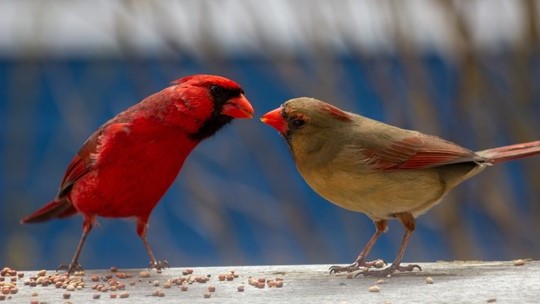
Photo – male and female Cardinal
The Eastern Bluebird and many other birds are here all year-round. Other birds, such as flycatchers and vireos, spend only the spring and summer breeding and raising their families, and then leave to spend winter in the tropics. Some only spend the winter with us, like several sparrow species. And some, including many warblers, only pass through as they migrate in the spring from their non-breeding grounds to their breeding grounds. That’s a lot of birds to see at different times of the year in the preserve and it’s why birding can be a year-round hobby.

Photo by Carroll Mayhew
Nest boxes in the Prairies and Meadows
The Society erected several nest boxes in the prairie and meadow habitats. They are primarily for the Eastern Bluebird, but both the Carolina Chickadee and the Carolina Wren also nest in them.
Please DO NOT disturb these nests. Please view any activity from afar using your binoculars.
To see the entire list of birds spotted in and around the Preserve
Go to the free website eBird.org/hotspots.
Once there, type in Spring Creek Forest, then select Spring Creek Forest & Preserve (Dallas Co) PPW-W 097, Dallas, US-TX
IMPORTANT: if you want to submit your bird list to e-Bird, use the specific Spring Creek Forest Hotspot to ensure your checklist is added correctly to our location. Our Hotspot is “Spring Creek Forest & Preserve (Dallas County) PPW-W 097” or “https://ebird.org/hotspot/L151004”. Do NOT just put in the street address, for example, 1770 Holford Road.
Listed below are some of the most frequently heard and seen birds in the Preserve.
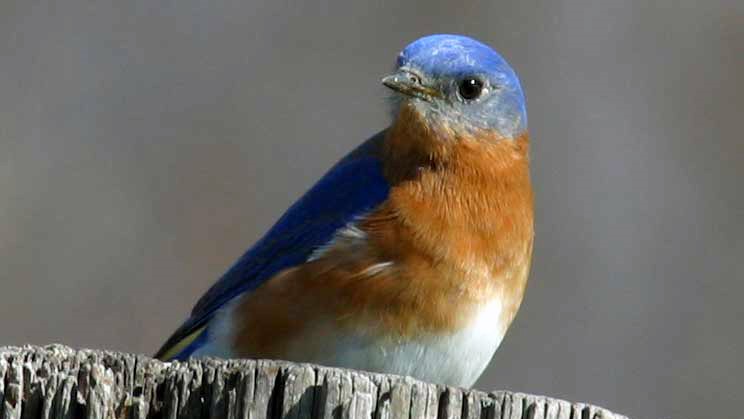
Bluebird – Eastern Bluebird, Sialia sialis
The Bluebird nest (dead grasses) will be built in March and an egg is laid each day (up to 4) but all chicks hatch on the same day.
Photo by Marvin Rogers

Cardinal – Northern Cardinal, Cardinalis cardinalis
The cardinal is the only red bird with a crest. The male is bright red, while the female blends into the woods with her yellow-brown feathering. She too has a crest.
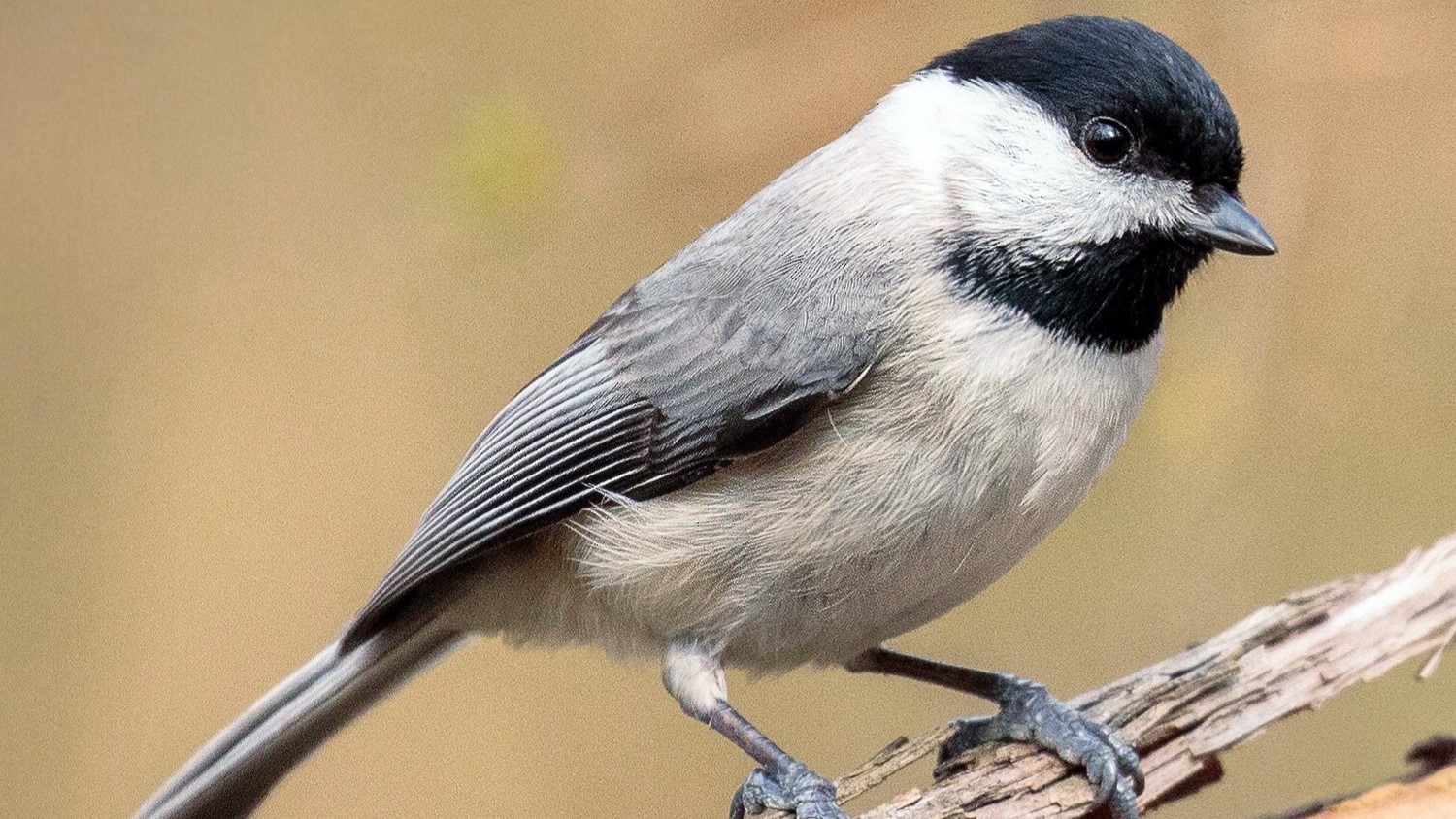
Chickadee – Carolina Chickadee, Poecile carolinensis
Chickadee nests are made of lichens. They usually have 4 eggs and are incubated for 11-12 days. They fledge in 13-17 days.
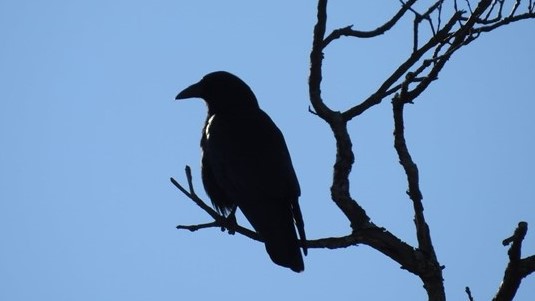
Crow – American Crow, Corvus brachyrhynchos
The crow is approximately 16”-21” tall. These intelligent birds live in flocks and can be seen in the tops of trees. They often chase hawks and owls away.
Photo by Chris Le Boullier
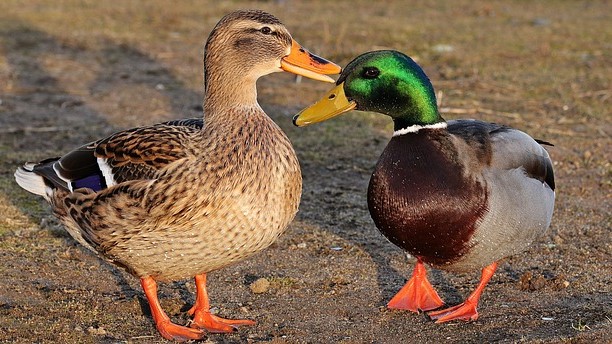
Duck – Mallard Duck, Anas platyrhynchos
Mallard ducks can be seen in Spring Creek dipping their heads into the water as they eat invertebrates, fish, plants, and amphibians. When on land they eat grains and plants. The males and females look nothing alike! The female mallard is a mottled brown with an orangish bill while the male sports a brilliant green head.
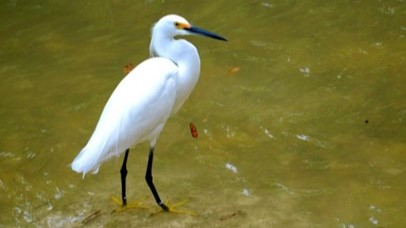
Egret – Snowy Egret, Egretta thula
An elegant mid-sized egret, it prefers the water’s edge to hunt frogs, fish, and aquatic invertebrates. If you look closely in the creek’s water, you can see this Snowy Egret’s distinctive yellow feet.
Photo by Brenda Clark
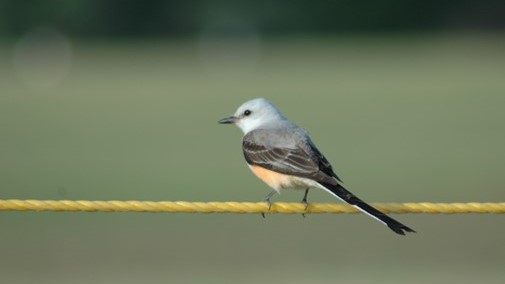
Flycatcher – Scissor-tailed Flycatcher, Tyrannus forficatus
This beautiful bird with the long tail is most often found in open areas such as the Prairie Preserve. They are insectivorous.
Photo by Marvin Rogers
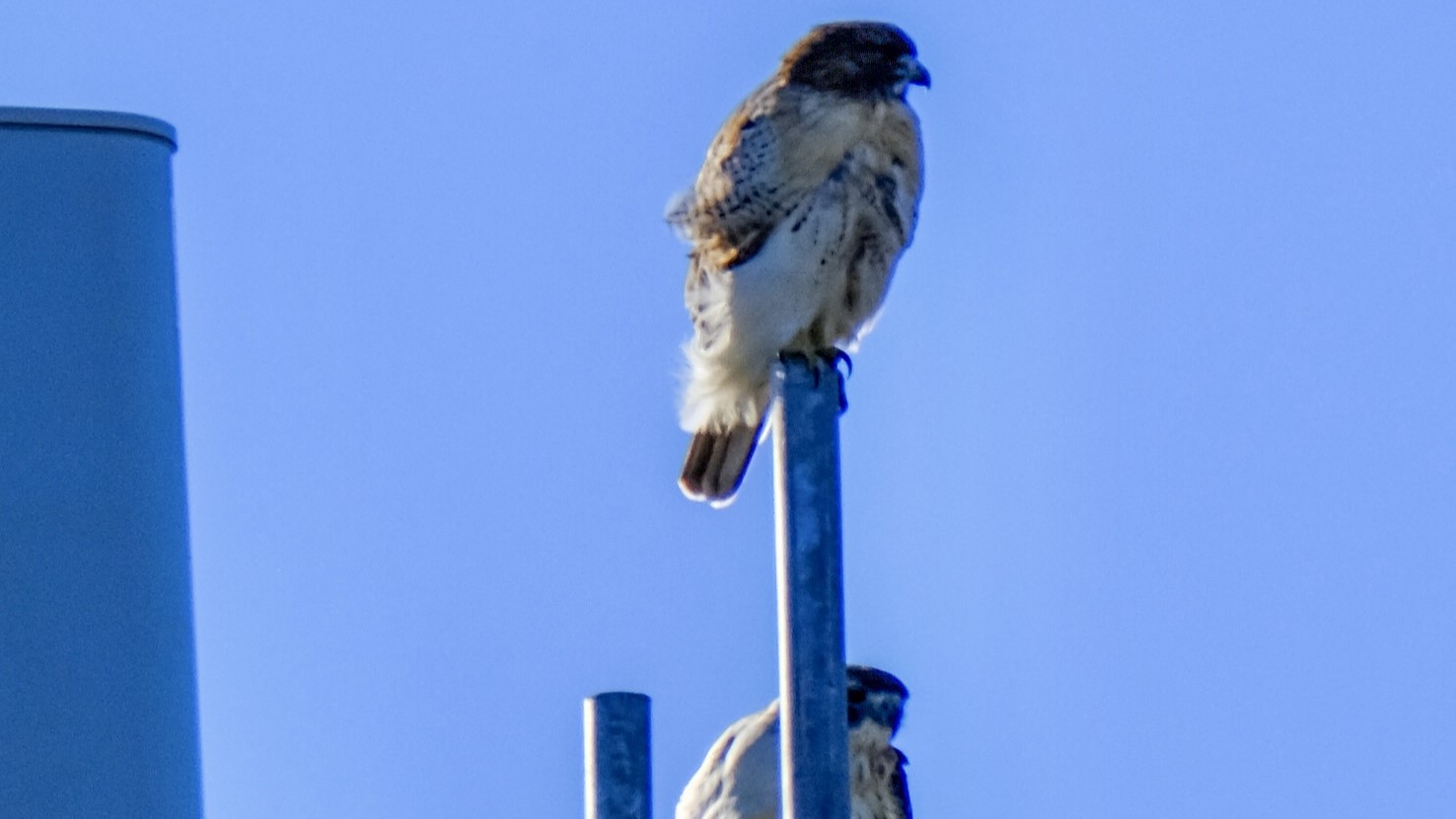
Hawk – Red-tailed hawk, Buteo jamaicensis
This large raptor is the most common hawk in North America. You can see it year-round in the preserve where it prefers high perches for hunting its preferred prey – small mammals like squirrels, rabbits, and mice. Huge numbers migrate from the far north to Texas for the winter. Look for our wintering pair of Red-tailed Hawks on the Holford Road cell tower.
Photo by Brenda Clark
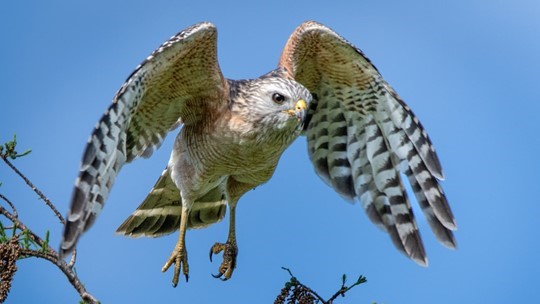
Hawk – Red-shouldered Hawk, Buteo lineatus
A mid-sized hawk that prefers the riparian forest as its hunting and nesting grounds. In breeding season, you will hear its distinctive loud scream “kee-yer” repeated over and over.
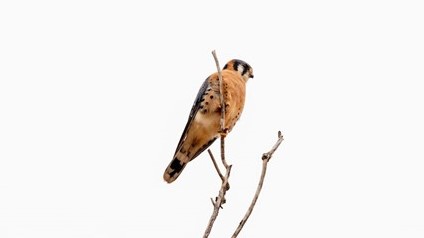
Hawk – American Kestrel, Falco sparverius
North America’s littlest falcon, the colorful American Kestrel is usually seen most frequently in the winter at the preserve, but we hope to encourage a breeding pair with a kestrel nest box. They are ferocious hunters, preferring large insects like grasshoppers.
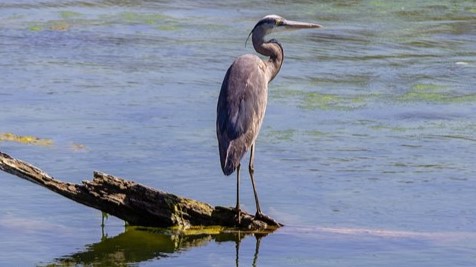
Heron – Great Blue Heron, Ardea Herodias
Great Blue Heron is the largest heron in North America with a wingspan of 80 inches. It hunts by wading in water and spearing fish with its long sharp beak.
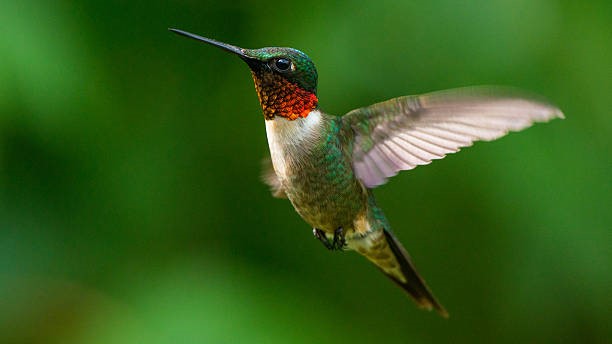
Hummingbird – Ruby-throated Hummingbird, Archilochus colubris
Watch for a small hovering bird with an iridescent green body and whitish belly. If it is an adult male, it will flash its red throat in sunlight. The female usually lays two pea-sized eggs in a tiny nest held together with spider webs and lichens.
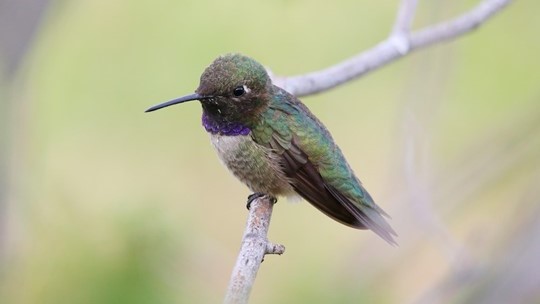
Hummingbird – Black-chinned Hummingbird, Archilochus alexandri
Our other summer resident hummingbird, this is also a green-backed hummingbird. The male has an iridescent purple throat below the black chin. Both of our hummingbird species feed on flower nectar and small insects.
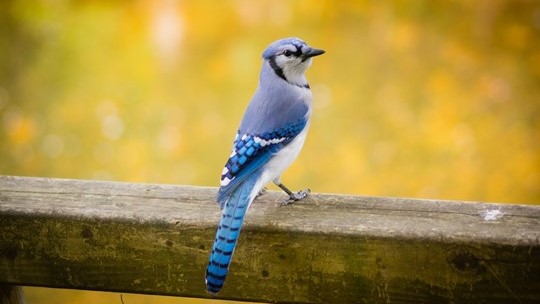
Jay – Blue Jay, Cyanocitta cristata
The Blue Jay is an intelligent bird which also chases hawks and owls, making this a sentinel for other birds.

Mockingbird – Northern Mockingbird, Mimus polyglottos
The Northern Mockingbird has about 200 different songs thus giving it the ‘mocking’ title. It has been known to mimic other birds, insects, amphibians, car alarms and other human sounds. They are usually at the forest edge and open areas.
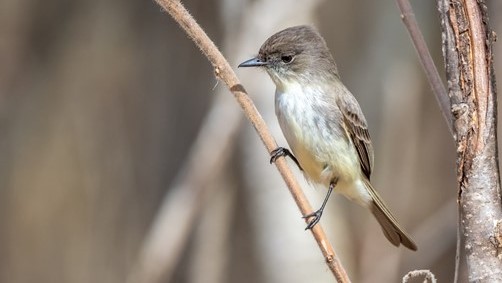
Phoebe – Eastern Phoebe, Sayornis phoebe
Listen for this small flycatcher’s raspy “phoebe” call. It likes to hang out on branches over the creek. It sits upright and wags its tail from an open perch.
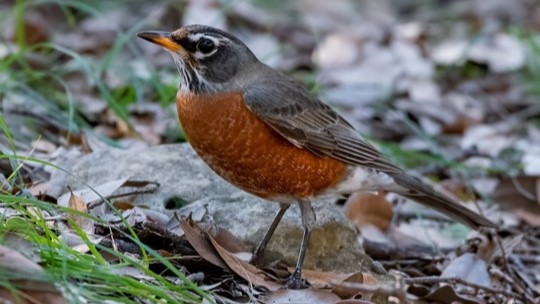
Robin – American Robin, Turdus migratorius
Robins tug earthworms out of the ground early in the morning. They also eat berries and other fruit. In the thrush family, they are recognized by their red or warm orange breast and their cheery song. Large flocks of robins can be seen in the winter, eating juniper berries in our riparian forest.
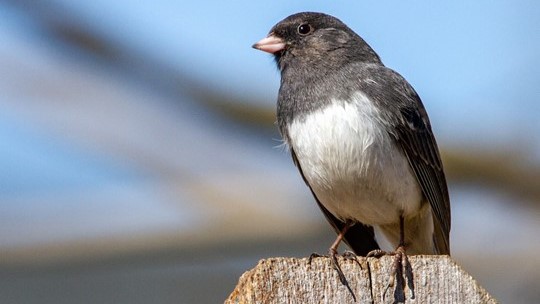
Sparrow – Dark-eyed Junco, Junco hyemalis
This small dark gray sparrow has a pinkish bill and white outer tail feathers. It forages on the ground for seeds and perches in low shrubs at the forest edge.
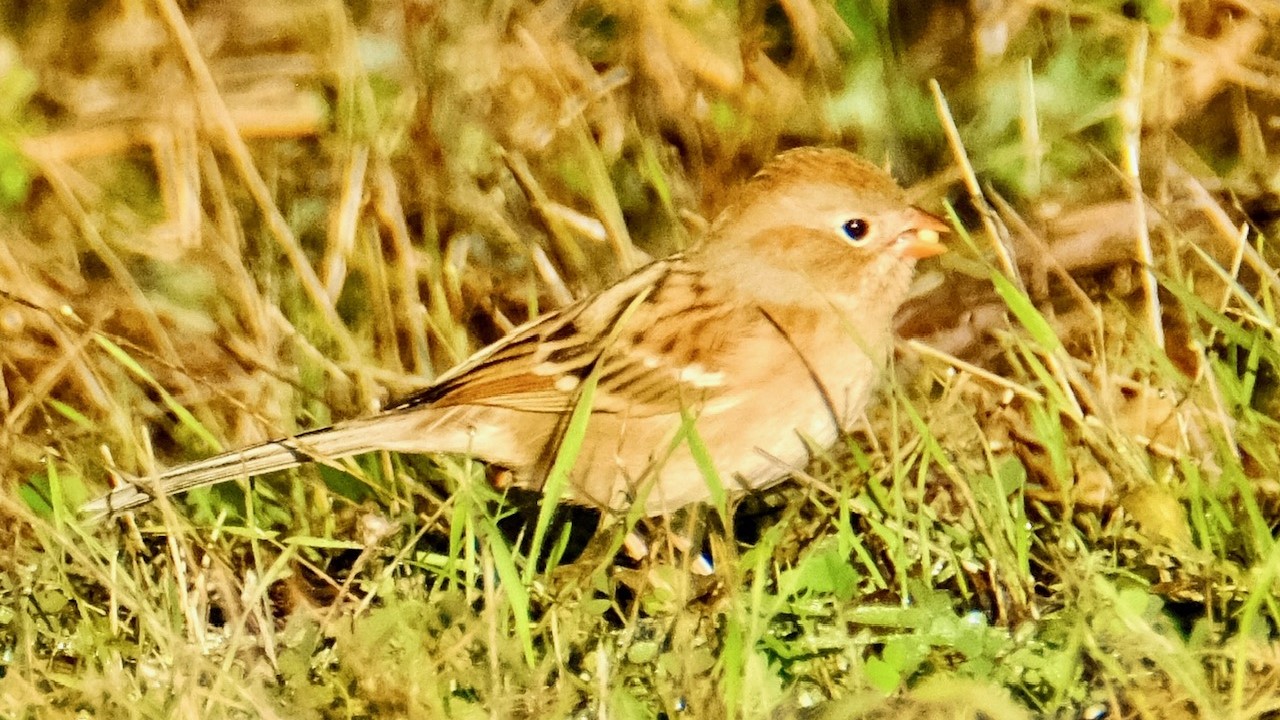
Sparrow – Field Sparrow, Spizella pusilla
The Field Sparrow prefers shrubby grasslands like our prairies in the winter. They will frequently be in mixed flocks of other wintering sparrows, foraging under shrubs or thickets.
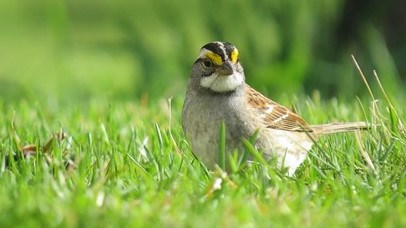
Sparrow – White-throated Sparrow, Zonotrichia albicollis
This is the most common wintering sparrow in north Texas. It is usually on the ground eating seeds. Listen for the pretty, repeating birdsong of “Oh-sweet-canada”.

Thrasher – Brown Thrasher, Toxostoma rufum
Thrashers are difficult to see but are often heard as they rummage through the underbrush looking for food. They too belong to the mimidae family (like the mockingbird).
Photo by Aaron J. Hill
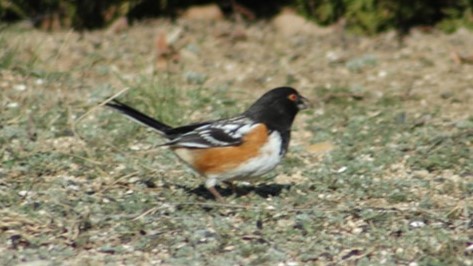
Towhee – Spotted Towhee, Pipilo maculatus
The Spotted Towhee is a migrant to our preserve. Towhees forage on the ground in the forest. Their loud noise is often mistaken for a squirrel.
Photo by Marvin Rogers
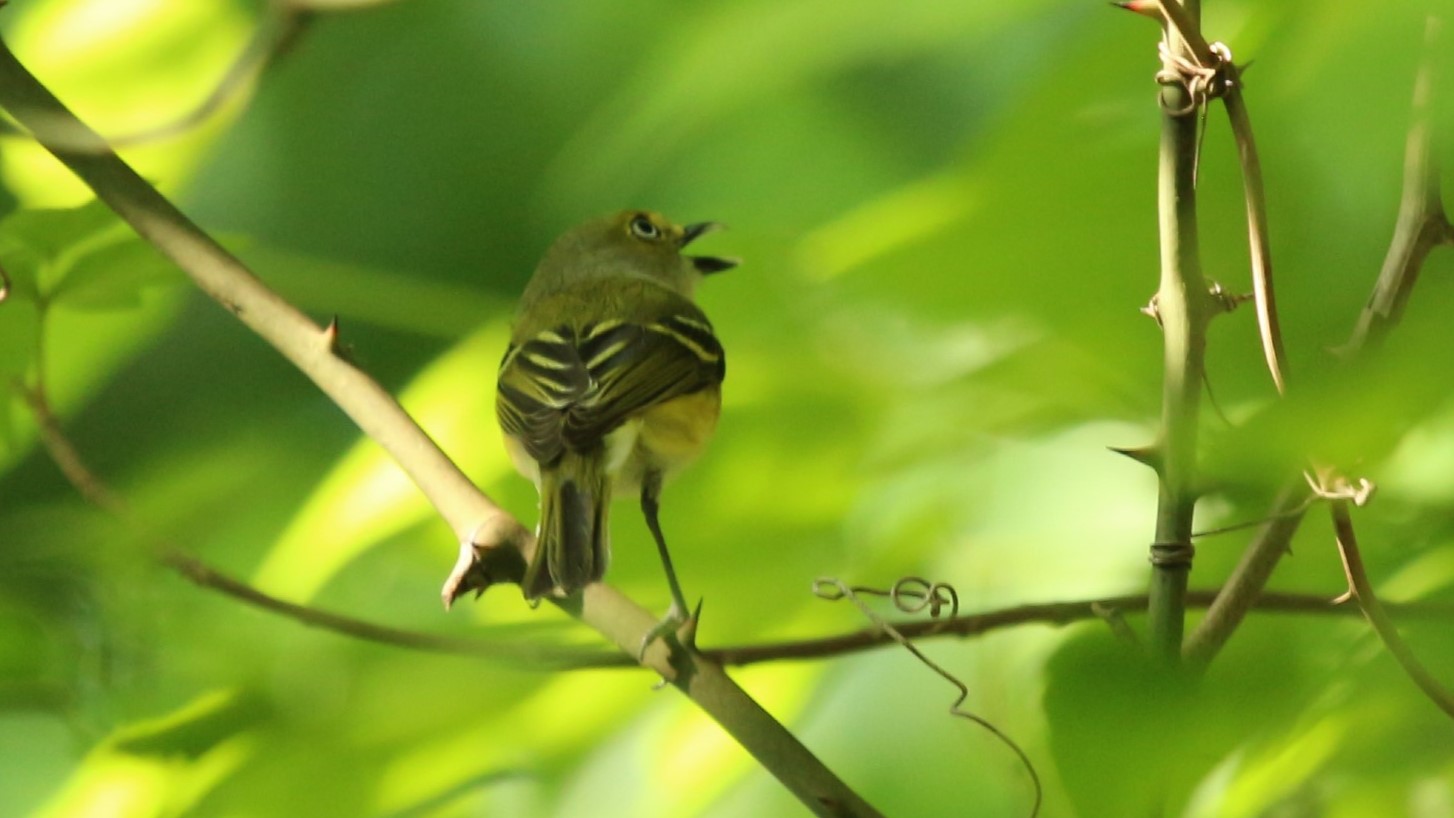
Vireo – White-eyed Vireo, Vireo griseus
A common breeding vireo with bright yellow spectacles contrasted with a gray head. This bird is more often heard than seen. Listen for it in April and May and consider yourself lucky if you see one. Nests in dense forest understory and thickets.
Photo by Arjun Jenigiri
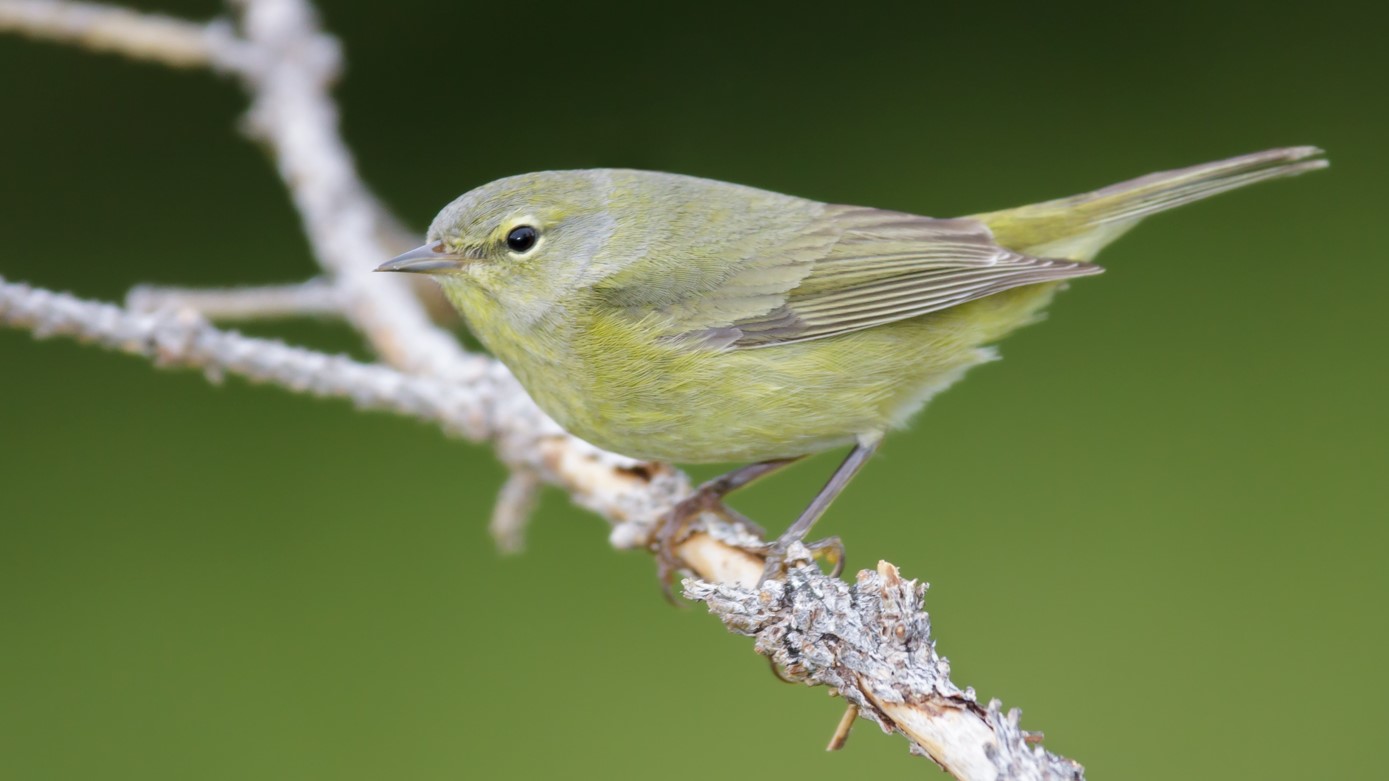
Warbler – Orange-crowned Warbler, Leiothlypis celata
This small wintering warbler has few field marks and just olive yellow all over. It rarely displays its orange crown feathers which are usually hidden under a layer of buff feathers on top.
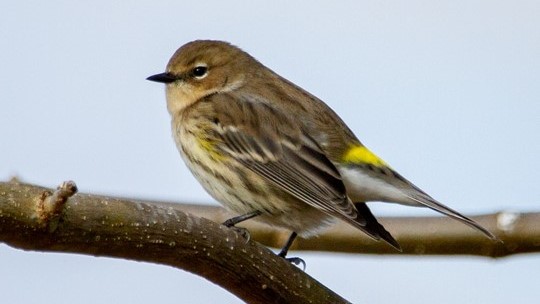
Warbler – Yellow-rumped Warbler, Setophaga coronata
It is a very active bird that flies out from a perch to snatch insects like a flycatcher does. Also eats berries in the winter. Its nickname is Butter-butt.

Waxwing – Cedar Waxwing, Bombycilla cedrorum
With its distinctive black mask and silky gray plumage, the Cedar Waxwing is a treat to watch. Here in the winter and early spring, they form flocks and eat every berry they can find before heading back to their breeding grounds in the north. You often hear the flocks filling the air with their high pitched whistles.
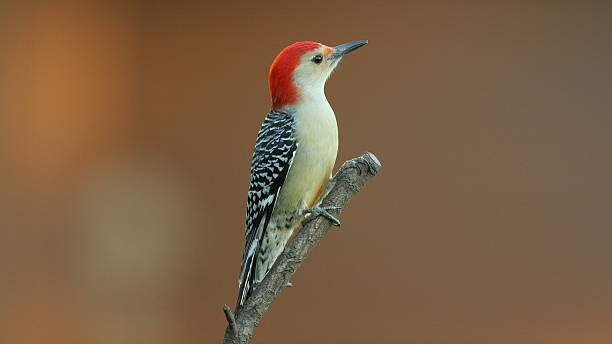
Woodpecker – Red-bellied Woodpecker, Melanerpes carolinus
This woodpecker does not damage the trees. While they eat fruits, nuts, berries and tree sap, they consume huge quantities of insects such as spiders, caterpillars, beetle larvae, flies, etc. It is named for the hard-to-see light-red feathers on its belly.
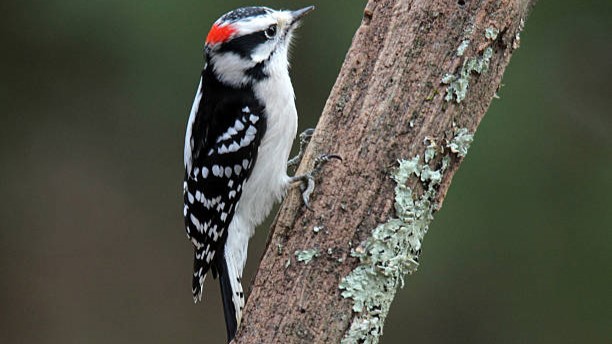
Woodpecker – Downy Woodpecker, Dryobates pubescens
This is an active small woodpecker commonly seen at the preserve and in local neighborhoods. The Downy Woodpecker eats foods that larger woodpeckers cannot reach, such as insects living on the stems of weeds.
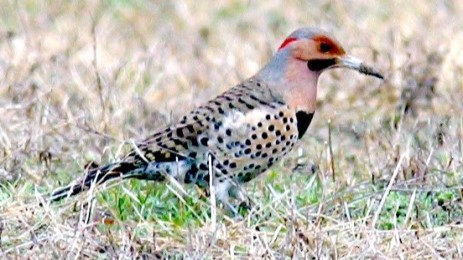
Woodpecker – Northern Flicker, Colaptes auratus
This is a large brown woodpecker with black spotted plumage that only winters in north Texas. It breeds mostly in Canada. Unlike other woodpeckers, you can see it foraging on the ground because it eats ants and beetles.
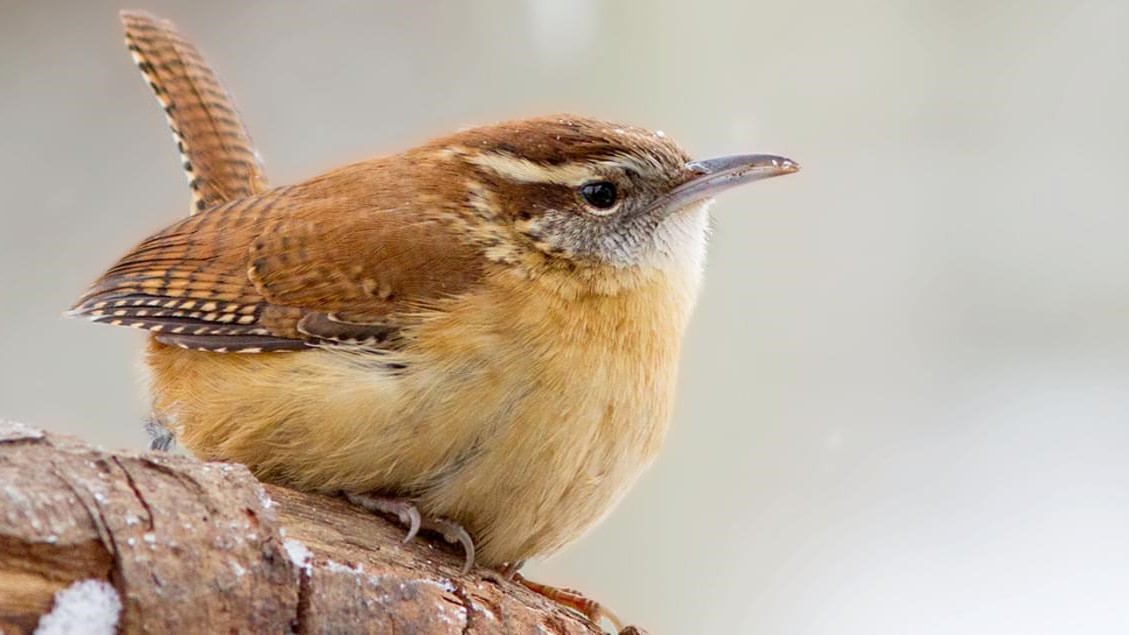
Wren – Carolina Wren, Thryothorus ludovicianus
The wren’s nest is made of dead grasses and leaves and the female lays eggs by early April. Incubation is 12-14 days then they fledge at 12-14 days.
